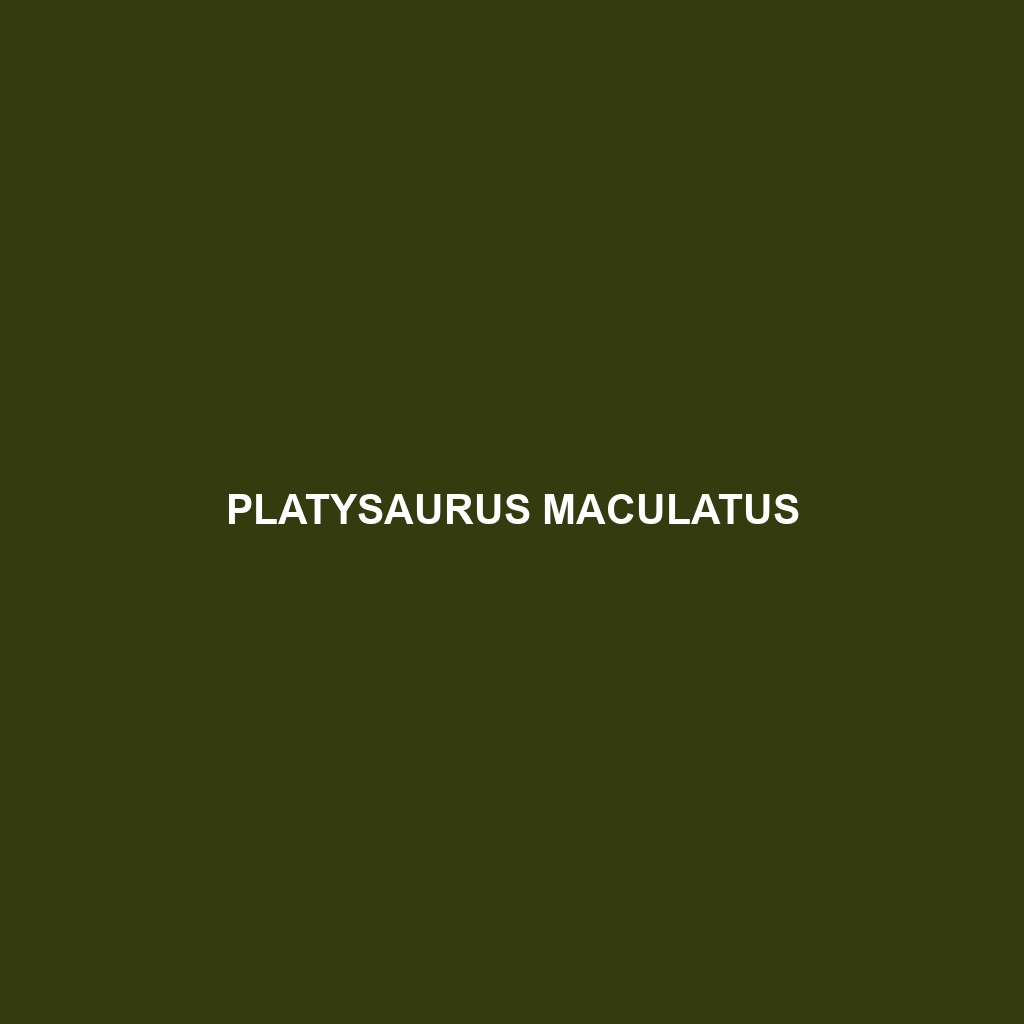Common Name
Platysaurus maculatus
Scientific Name
Platysaurus maculatus
Habitat
Platysaurus maculatus, commonly known as the spotted flat lizard, primarily inhabits the diverse ecosystems of Southern Africa. These lizards can be predominantly found in diverse habitats such as savannas, scrublands, and temperate forests, where sandy or rocky substrates provide perfect conditions for their burrowing lifestyle. They favor areas with abundant sunlight and sufficient cover from potential predators, making grasslands and shrub-dominated environments ideal locales. The climate in these native regions varies from dry to tropical conditions, allowing Platysaurus maculatus to adapt to a range of environmental factors while seeking shelter from extreme temperatures.
Physical Characteristics
Platysaurus maculatus exhibits distinctive physical features that make it easily recognizable among other lizard species. Typically, these lizards grow to an average length of about 25 to 30 cm. Their bodies are flattened and elongated, making them capable of moving swiftly across their habitats. The coloration of Platysaurus maculatus is particularly noteworthy, featuring a mosaic of brown and grey scales adorned with striking spots, which can vary significantly among individuals. This cryptic coloration helps them blend into their surroundings, providing an effective defense mechanism against predators. Another notable characteristic is their strong limbs and sharp claws, adapted for quick movements and climbing.
Behavior
In terms of behavior, Platysaurus maculatus exhibits a range of fascinating habits. They are primarily diurnal, active during the day, and often bask in the sun to regulate their body temperature. Their social interactions are intriguing; these lizards are known to establish territories, with males often engaging in displays of dominance to ward off rivals. Mating rituals can be elaborate, involving courtship dances and vibrant displays. Interestingly, they also have a unique adaptive behavior that allows them to change their colors slightly, further assisting them in camouflage against predators. As a result, they are often seen moving swiftly to hide among vegetation or rocky areas when threatened.
Diet
Platysaurus maculatus is primarily an insectivore, preying on a variety of small insects, including ants, beetles, and other arthropods. Their foraging behavior involves a combination of active hunting and ambush tactics, where they rely on their speed and agility. This species is also known to occasionally consume plant matter, indicating an omnivorous aspect to their diet. This diverse feeding pattern allows them to capitalize on food sources throughout different seasons, ensuring their survival even in regions with fluctuating food availability.
Reproduction
During the breeding season, which occurs in the warmer months, Platysaurus maculatus engages in elaborate courtship behaviors that are vital for successful reproduction. After mating, females lay a clutch of eggs, typically ranging from 4 to 12, in a well-hidden nest to protect them from predators. The incubation period lasts approximately 6 to 8 weeks, after which the hatchlings emerge fully formed and ready to begin their independent lives. Parental care is absent, as the female does not stay with her offspring after laying. This reproductive strategy, ensuring the survival of a portion of the young, allows for higher population densities in optimal habitats.
Conservation Status
As of now, Platysaurus maculatus is classified as Least Concern according to the International Union for Conservation of Nature (IUCN). The species is relatively widespread and adaptable, which has helped to mitigate potential threats. However, habitat loss due to agricultural expansion and urban development poses significant challenges. Conservation efforts are important to maintain their populations and protect their natural habitats. Educating local communities about the ecological importance of preserving lizard species can help reduce these dangers.
Interesting Facts
One particularly interesting aspect of Platysaurus maculatus is its ability to alter its behavior based on environmental factors. For instance, they become less active during extreme heat, opting for underground burrows to escape the sun. During social engagements, males often engage in head-bobbing displays, a behavior seen in many lizard species as a form of communication and territorial assertion. Furthermore, this species has been observed to have varying spot patterns, suggesting the possibility of local adaptations within different populations.
Role in Ecosystem
Platysaurus maculatus plays a crucial role in its ecosystem as both a predator and prey. By feeding on various insect populations, these lizards help maintain ecological balance and control pest species. Moreover, they contribute to the food web, serving as a food source for larger predators such as birds of prey and snakes. Their burrowing activities also enhance soil health, promoting nutrient cycling within their habitats. This intricate balance highlights the importance of preserving Platysaurus maculatus and its natural environment as a keystone species.
